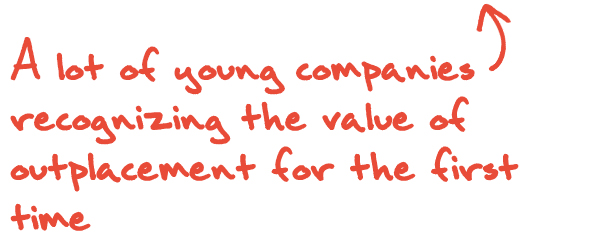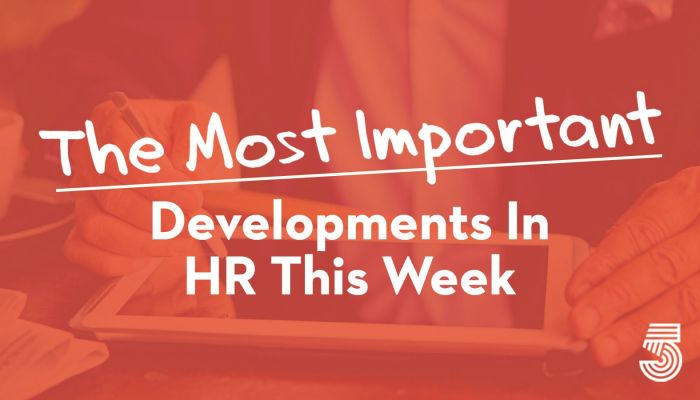The M.I.D., as we call it, is curated by our editorial team from more than 50 news sources. Like a lot of good ideas, this started as something I wanted for myself. If I can’t read everything, I at least want to stay abreast of the most important developments.
This week in HR, the Fed’s interest rate hike was poised to affect hiring, we got tips for avoiding remote burnout (hint: turn off the computer), we learned it will pay to plan now for the next crisis, tech layoffs continued, and we all need to stop making the business case for diversity.


The Fed’s higher-than-expected rate increase means hiring will probably slow down and there may be more layoffs on the horizon, said Leo Feler, a senior economist at the UCLA Anderson Forecast. He forecasts that the national unemployment rate will rise to 4.5% by the end of the year, up from the current 3.6%. As unemployment goes up, wage growth goes down, which will damp consumer spending power. People will be worried about keeping their jobs and could be less likely to ask for higher wages. Those in low-wage jobs or jobs they don’t like will be more likely to stay in their current positions for fear of being unemployed. “The trade-off right now is that the Federal Reserve is willing to sacrifice some employment in order to make sure that inflation comes down because in the long term, if we continue to have such high rates of inflation, it really harms consumers,” Feler said. This comes at a moment when hiring has been booming. In May, the U.S. added almost 400,000 jobs, with unemployment remaining low. Los Angeles Times


In the time of the great resignation, when more Americans are quitting than ever before, talent is a business’ most precious commodity. Managing to preserve and elevate talent means understanding how employees are working to help them be more effective while minimizing burnout. Consider the case of an employee who is showing signs of underperformance. In the office, a manager might more readily glean why this is the case through observations of how the person works or a casual discussion about pain points. In a company with remote workers, detecting challenges and remedying them is difficult without a proactive approach. On the opposite end of the spectrum, an employee who seems perfectly fine may be working until 9 pm every day to stay afloat. Minimizing burnout, too, will require more active and transparent management in times when leaders will not see the employees who are physically staying at work late. Toolbox


Research from the Society for Human Resource Management (SHRM) and Gap International released June 14 found that having prepared leaders who could swiftly size up the crisis’ implications, take quick action, and engage key staff members and their networks was crucial to helping organizations surmount the pandemic’s challenges. The research also found that employees can better cope with stress and change when their supervisors and workgroups practice inclusivity. “A resilient organization can keep the workforce going through crisis and protect staff and stakeholders,” said Johnny C. Taylor, Jr., SHRM-SCP, SHRM president and chief executive officer. “The best leaders responded to obstacles with next-level ingenuity—their organizations are not only surviving, but thriving. “Leaders can protect their employees and businesses by engaging in swift and continuous communication, removing obstacles to employee empowerment, and ensuring their cultures reinforce collaborative and adaptive behaviors.” SHRM


The decline in the tech-heavy stock index is a barometer of the tech sector, meaning the unbridled growth of the past few years is contracting sharply as well. That’s been accompanied by recent warnings from the venture capital community that fundraising would be much more challenging for founders for the foreseeable future. Already, the layoffs have begun accumulating. May saw more than 16,000 tech layoffs. And since the beginning of June, more than 7,000 more positions have been eliminated. Coinbase is the most recent. On Tuesday, the company announced plans to lay off 18% of its full-time workforce. With approximately 5,000 workers, that works out to about 1,100 people. A looming possible recession and overly optimistic growth are being blamed for the decision. Earlier, the company had announced plans to pause hiring, rescinding an undetermined number of accepted job offers, which left many people stranded after leaving their previous jobs. Coinbase was hardly alone, though. The staff trimmings are occurring at tech companies around the world and are adding up fast. Fast Company


Most organizations don’t feel the need to explain why they care about core values such as innovation, resilience, or integrity. And yet when it comes to diversity, lengthy justifications of the value of hiring a diverse workforce have become the norm in corporate America and beyond. Translated into percentages, our statistically robust findings show that underrepresented participants who read a business case for diversity on average anticipated feeling 11% less sense of belonging to the company, were 16% more concerned that they would be stereotyped at the company, and were 10% more concerned that the company would view them as interchangeable with other members of their identity group, compared to those who read a fairness case. Compared to those who read neutral messaging, participants who read a business case reported being 27% more concerned about stereotyping and lack of belonging, and they were 21% more concerned they they would be seen as interchangeable. In addition, after seeing a company make a business case, our participants’ perceptions that its commitment to diversity was genuine fell by up to 6% — and all these factors, in turn, made the underrepresented participants less interested in working for the organization. HBR










